General Motors, Uber And Google have been working to perfect self-driving vehicles and Uber has been allowed to conduct self driving tests in three U.S. cities and Toronto. On March 18th an accident in Arizona left a pedestrian dead as was reported in the Arizona Republic Newspaper. The accident remains under investigation and even though fault has yet to be determined the ridesharing company still decided to cease testing all self-driving vehicles. With each new technology that hits the roads, there are new possibilities for accidents and injuries.
The fatality occurred in the Phoenix suburb of Tempe and according to police a 49-year-old woman was crossing the street outside the crosswalk on a Sunday night at around 10:00 pm. An Uber in fully autonomous self-driving mode struck the pedestrian, and sadly the woman ultimately died from her injuries. Arizona law currently allows companies like Uber to test their self driving system with no one in the driver’s seat and as required there was a human in the passenger seat when the fatal accident in Tempe took place. In car video showed the human in the front passenger seat looking at the on board laptop at the time of the collision.
Those pushing the adoption of self-driving vehicles suggest they are a safer alternative to human-operated vehicles because self-driving vehicles don’t become distracted or fail to follow the rules of the road. Self-driving vehicles always follow the rules of the road and their on-board algorithmic assumption presents a potential safety problem. A challenge that exists for self-driving vehicles is how they respond to unexpected human behavior.
The events of the recent Arizona accident which authorities and Uber are still investigating are doing much to shed some light on these challenges. The Police report indicated that the pedestrian was crossing the street outside the crosswalk. The simple act of a pedestrian crossing outside of a crosswalk doesn’t automatically make the pedestrian at fault for any accident that occurs. California law requires pedestrians crossing outside a marked crosswalk to yield to vehicle traffic it is not the only relevant legal factor. Even when a driver has the right of way, he or she still has a legal obligation in California to exercise caution to avoid hitting pedestrians in the roadway.
If lighting and other relevant details indicate a driver should have seen a pedestrian in the road in time to take appropriate evasive action to avoid that pedestrian the driver can still possibly be liable for hitting the pedestrian. This can be true even if the pedestrian was legally required to yield. Some have questioned the technology behind self-driving vehicles and its ability to respond to human variables (like pedestrians crossing outside the crosswalk, pedestrians walking and texting, joggers listening to music with earbuds or drivers committing traffic violations) and to exercise that due care to avoid accidents as required by the law. Those researching self driving technology are struggling with how to teach an autonomous systems to adjust for unpredictable human driving or behavior and this includes distracted driving.
We represent people who are injured because of the careless and reckless acts of others. At the end of the day your case can only be settled one time and you need to know all of the facts beforehand. The reason that insurance companies have paid our clients in excess of $130,000,000.00 is that we get the facts and are not intimidated at the prospect of going to trial when they refuse to follow the law. We help with serious issues that require serious representation. We are the Law Offices of Guenard & Bozarth. We have over 80 years of experience in our plaintiff’s only law firm. Call GB Legal 24/7/365 at 888-809-1075 or visit www.gblegal.com We Can Help!

